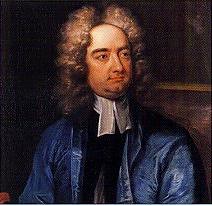
From left: Agence France-Presse (1969); Library of Congress, NYWT&S Collection; Kevork Djansezian/Associated Press (2005)
Artists in revolt: Nina Simone, Woody Guthrie and Billie Joe Armstrong of Green Day.
What is protest music? In April 1966,
Bob Dylan arrived in Stockholm as part of his controversial “electric” world tour, and a local interviewer asked him why he was no longer writing and performing protest songs. Dylan, irritated and more than a little out of it, objected to the question’s premise and called one of his new rock ’n’ roll compositions the very height of protest music: “Very, very protesty. And, uh, one of the protestiest of all things I ever protested against in my protest years.”
Dylan made a habit of acting testy — or protesty — with journalists, and who was to say that the song he was talking about, “Rainy Day Women #12 & 35,” wasn’t his protest against the left-wing folk purists who were hounding him for no longer writing songs like “ The Times They Are A-Changin’ ”? Taken literally, being stoned — which, in Dylan’s song, everybody, and not just he, must get — is a biblical form of persecution that still exists today. Dylan was having sly fun with the reporter, but he was also reimagining what a protest song is and is not.
In “33 Revolutions Per Minute,” Dorian Lynskey works with a more traditional definition: a protest song, he writes, is a song that “addresses a political issue in a way which aligns itself with the underdog.” Specifically, Lynskey is concerned with the long tradition of radical songwriting and performance — mainly in folk music but also in jazz — that emerged forcefully in the United States out of the Communist-affiliated Popular Front left during the late 1930s and the 1940s. Artists sympathetic to the civil rights and anti-Vietnam War movements revised the tradition in the 1950s and ’60s, and thereafter it splintered into a plethora of angry anthemic styles, ranging from the black power hip-hop of Public Enemy’s “Fight the Power” to the neo-punk of Green Day’s “American Idiot” to updates of ’60s protest rock like Neil Young’s ode to George W. Bush, “Let’s Impeach the President.” In 33 chapters, each one centered on a particular song (hence the book’s punning title), Lynskey explores the gamut of this protest tradition but then goes further, explicating the shifting historical context from the Great Depression until today, and bringing in dozens of other lesser-known artists and songs that did not make the cut for his chapter titles.
Sean Wilentz teaches history at Prince ton University. His most recent book, Bob Dylan in America,” will appear in paperback this fall, and he is the historian in residence for the official Dylan Web site.
--------------------------------
Sounds delicious, a delicious read, I'll guess. Especially if you've got a computer Media Player handy to listen to a few of the Protest songs in full, and a snippet or two from lots of others.
One name of a great musician of the time is that of Jimmy Hendrix, whether his songs All along the Watchtower, and Star-Spangled Banner (instrumental).
-- NYT article into posted here by Musicman



 >br>
>br>









No comments:
Post a Comment